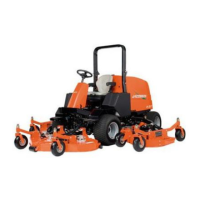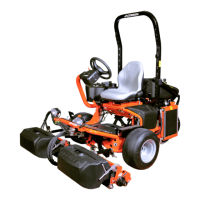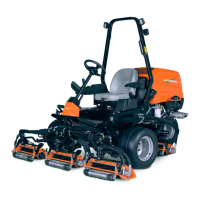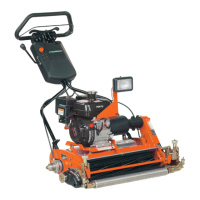HYDRAULICS
8L-53
SECTION 8L. HYDRAULIC FIELD TEST PROCEDURES
GENERAL
When a hydraulic failure occurs, some simple, effective
tests can be performed prior to using a test instrument.
The results of these tests can lead you to the sus-
pected component failure. More extensive test proce-
dures, using test instruments, are presented in
Section 8M. Component location illustrations, hydraulic
schematics, and diagrams are presented in
Section 8M. Before performing any tests see Prelimi-
nary Checks below.
SAFETY REMINDER
• Follow the procedures one step at a time.
• Observe all NOTES, CAUTIONS, and WARNINGS.
• Pay attention to what you are doing. Work with a
safety conscious attitude.
• Use care when working with HOT oil.
• Wear safety glasses at all times.
• Keep hands and feet away from the mower blades.
• Shut off the engine and lower the attachments to the
ground when making adjustments or hydraulic
connections unless otherwise specified in the test
instructions.
PRELIMINARY CHECKS
The following checks should be made before perform-
ing any tests.
• The reservoir should be checked for proper fluid
level, the presence of water (noted by cloudy or
milky appearance), air (noted by a foaming
appearance), or a rancid odor indicating excessive
heat.
• If any of the above symptoms appear, or if the
hydraulic oil becomes contaminated, or after a major
component failure, the system should be flushed,
the oil changed, and a new filter installed.
Check all
lines and fittings for leakage and tighten as
necessary.
• Eliminate all possible mechanical problems before
starting the hydraulic tests.
CHARGE PUMP TEST
The charge pump supplies oil pressure for charging the
traction circuit for traction, steering, and lift.
• If faults exist in all systems, proceed with an
instrument test for the charge pump.
• If a fault exists in steering, proceed with an instru-
ment test (Section 8M).
• If a fault exists in lift circuit, proceed with Lift System
Test.
TRACTION SYSTEM TEST
1. Operate the mower until hydraulic oil is at operat-
ing temperature, 110 – 130°F (43 – 54°C).
2. Chain the mower to a stationary object, such as a
tree or pole, on concrete or asphalt.
3. With the throttle wide open and decks lowered,
push the traction pedal forward.
Conclusion
• If the traction wheels break traction, the traction
pump is not at fault.
• If the traction wheels do not break traction and the
engine does not labor, a fault may exist in the
hydrostatic drive circuit, including the traction pump
or traction motors.
WHEEL MOTOR TEST
1. Operate the mower until hydraulic oil is at operat-
ing temperature, 110 – 130°F (43 – 54°C).
NOTICE
Use only the recommended hydraulic oil (see
Section 11). Always change the filter when changing
the oil.
CAUTION
Do not perform this test without the proper wheel
restraints (Figure 8A-1).
8L

